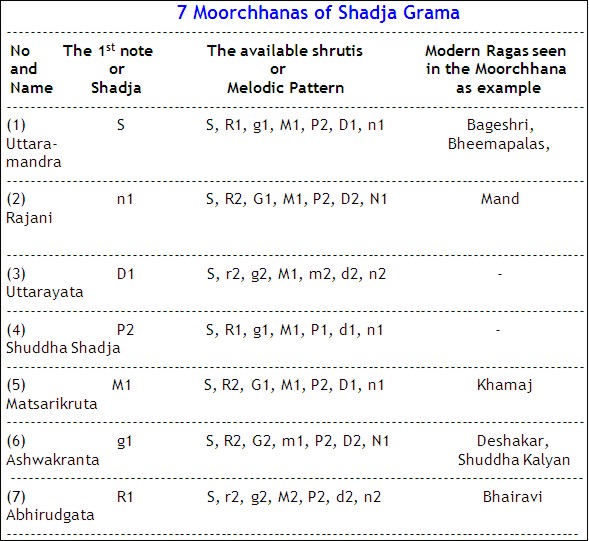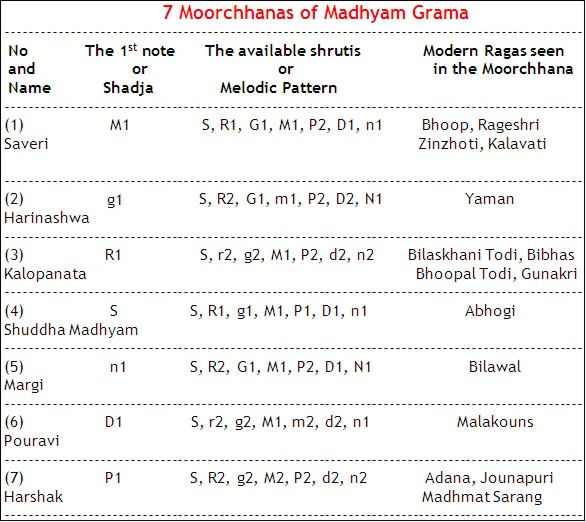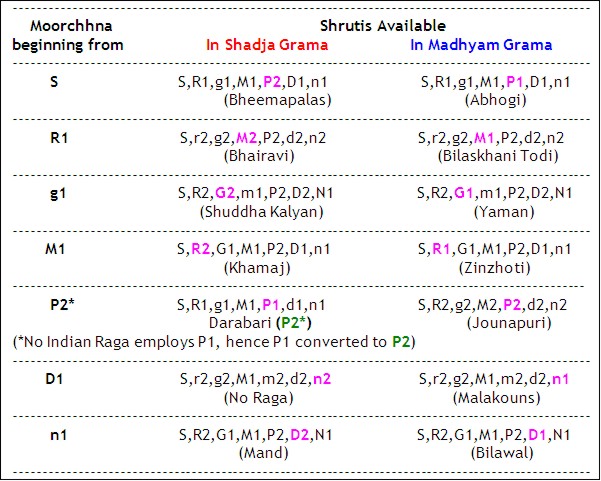After his scale was demonstrated, Bharatamuni observed that if the Shadja was serially shifted to other notes, groupes of specific notes with a melodic flavour different than the original scale became available.
There were 7 notes (S, R1, g1, M1, P2, D1, n1) in the Shadja Grama, and 7 notes (S, R1, g1, M1, P1, D1, n1) in the Madhyam Grama. Thus, Shadja could be shifted on 7 + 7 = 14 notes. He thus described 14 melodic patterns and called them "Moorchhanas".
In Sanskrit, the word 'Grama' means a 'group' and 'Moorchhana' means 'upward movement of a musical note'.
The 14 Moorchhanas thus described by Bharata are as below.


It appears that the above 14 Moorchhanas or Melodic Patterns were the original ideas and templates for creating different melodies (Ragas).
One different note (coloured in Magenta) appears in the same Moorchhana in 2 different Gramas as shown below.

It appears that Ragas available today (1000 or so) have resulted from their creators taking liberties beyond these Moorchhanas.
Nothing wrong there because Moorchhana was just a system or a way forward, not a final result.

